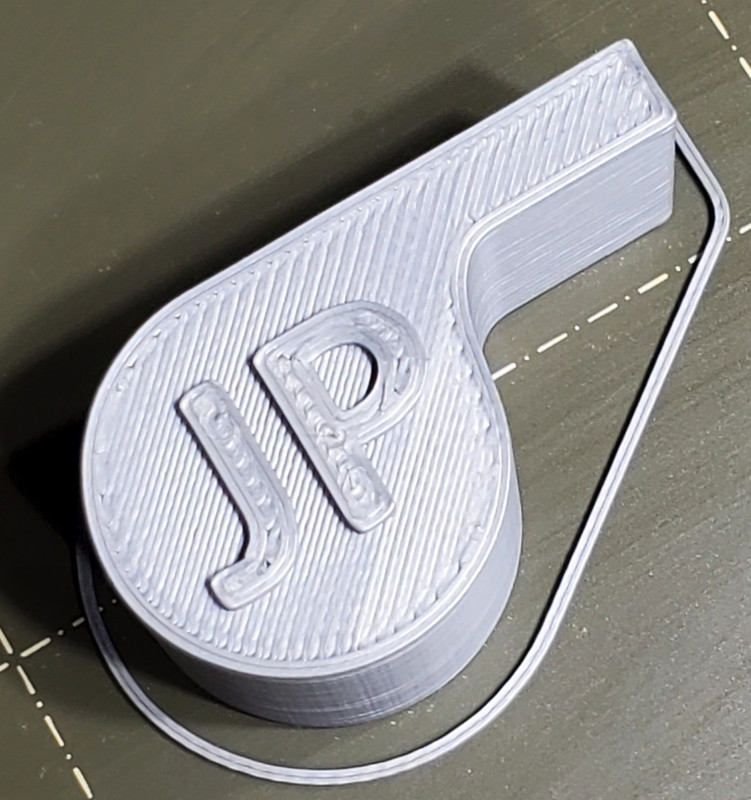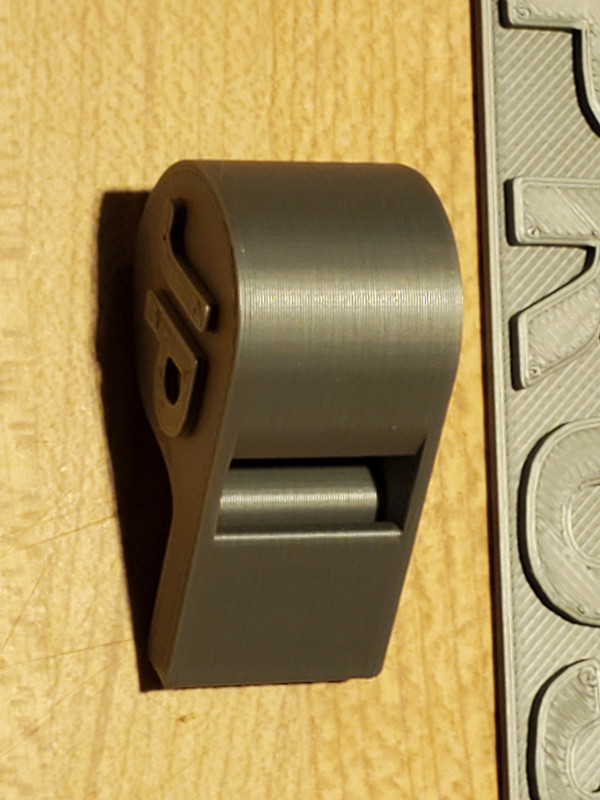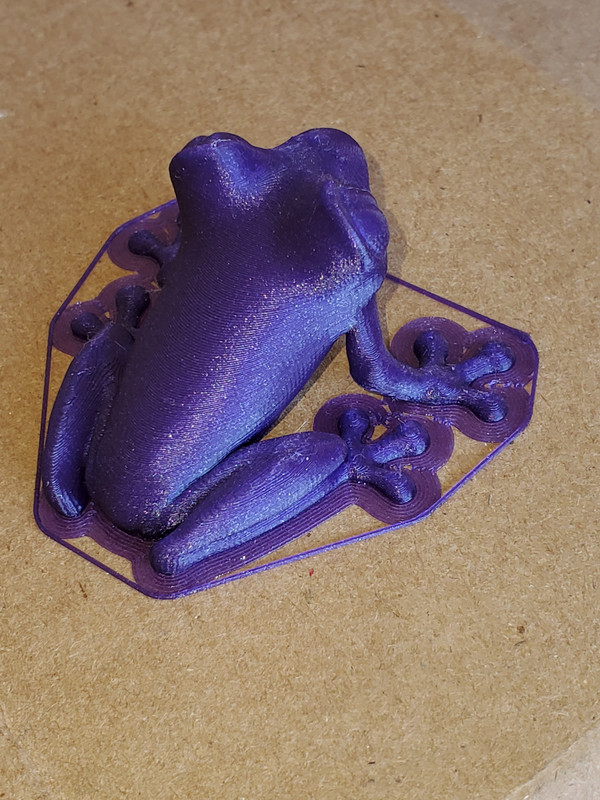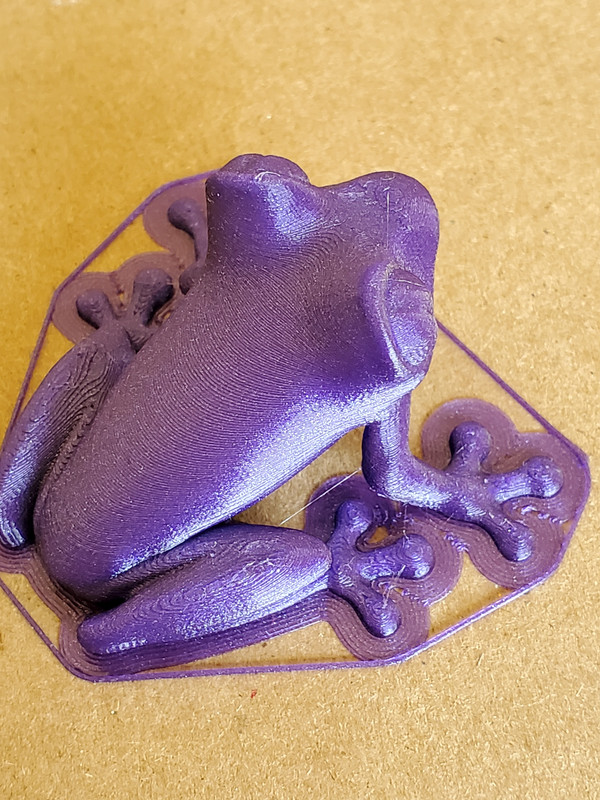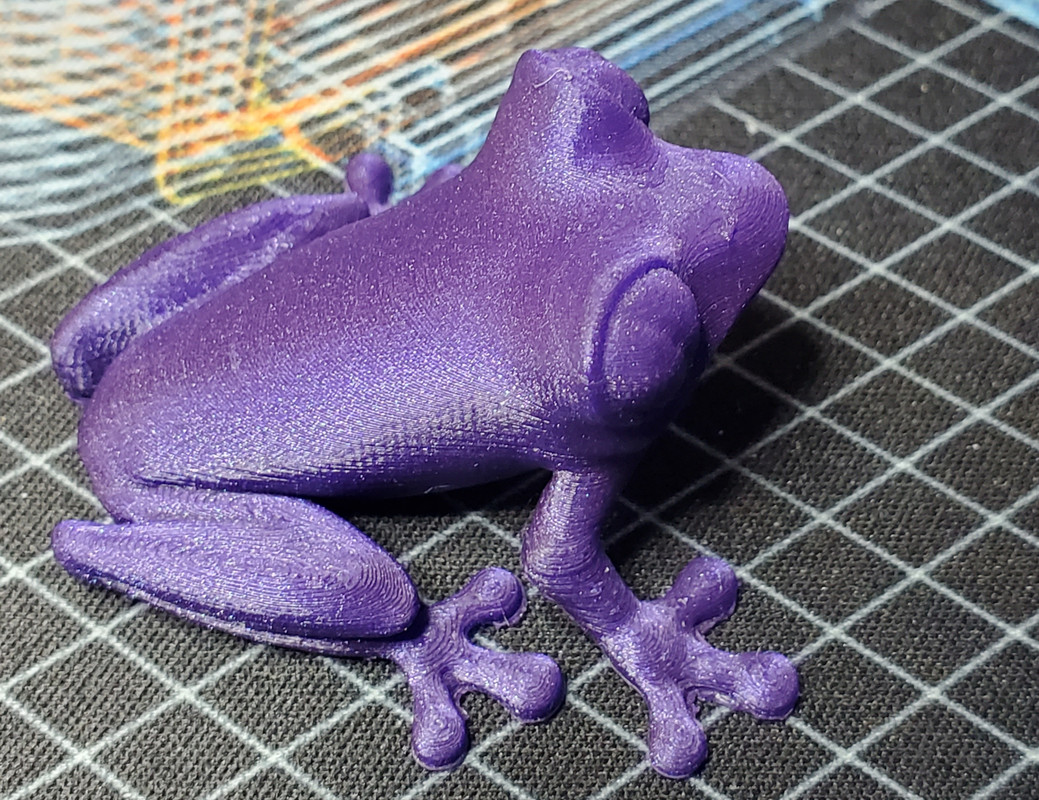3D Printers
-
I just ordered one. My daughter is going to use it more than I will, and she might even make a few extra bucks with it, who knows.
Ordered a Prusa i3 MK3S + kit, and a couple of spools of PLA filament.
Lots of research. Prusa is the the king of the hill right now as far as everything is concerned from ease of use, reliability, print quality, and customer service. The Prusa support "universe" is very large and the online communities are many.
4 week lead time...
Does anyone have any experience with 3D printers?
-
I just ordered one. My daughter is going to use it more than I will, and she might even make a few extra bucks with it, who knows.
Ordered a Prusa i3 MK3S + kit, and a couple of spools of PLA filament.
Lots of research. Prusa is the the king of the hill right now as far as everything is concerned from ease of use, reliability, print quality, and customer service. The Prusa support "universe" is very large and the online communities are many.
4 week lead time...
Does anyone have any experience with 3D printers?
-
Got one a few years back, a FlashForge dual-extruder model. Printed a few smaller things to get a feel for what it’s about, but haven’t use it for quite a while. Most likely the technology has improved, but what I got I find very little “useful” thing to do with it. :man-shrugging:
-
They seem very cool, but i am wondering what to do with it, if I ever got one.
-
I just ordered one. My daughter is going to use it more than I will, and she might even make a few extra bucks with it, who knows.
Ordered a Prusa i3 MK3S + kit, and a couple of spools of PLA filament.
Lots of research. Prusa is the the king of the hill right now as far as everything is concerned from ease of use, reliability, print quality, and customer service. The Prusa support "universe" is very large and the online communities are many.
4 week lead time...
Does anyone have any experience with 3D printers?
-
I was just wondering if anyone works with them, regularly, and what they have made.
I am going to 3d print some guitar picks, parts for my helicopters, parts for the sim rig, possibly cool little gadgets for the house. The possibilities are many.
My daughter will be doing original 3D art pieces, custom miniatures, etc.
-
I was just wondering if anyone works with them, regularly, and what they have made.
I am going to 3d print some guitar picks, parts for my helicopters, parts for the sim rig, possibly cool little gadgets for the house. The possibilities are many.
My daughter will be doing original 3D art pieces, custom miniatures, etc.
@mark said in 3D Printers:
I am going to 3d print some guitar picks, parts for my helicopters, parts for the sim rig, possibly cool little gadgets for the house. The possibilities are many.
My daughter will be doing original 3D art pieces, custom miniatures, etc.
guitar picks -- the surfaces of the 3D-printed object will be textured, you may be disappointed if you expect the guitar picks to be smooth
part for helicopters and sim rig -- don't know enough to comment, except to say that I would not expect the 3D-printed pieces to be "strong", especially if the pieces have parts that are "thin."
Be sure to place the 3D printer on a very sturdy, very stable surface and don't bump it while it prints. I would even go so far as to say don't touch it while it print. I once accidentally bumped my 3D printer in the middle of a printing project and top half of the item shifted by just a fraction of a hair from the bottom half of the item -- and that "fraction of a hair" shift is very much visible.
Furthermore, the particular model you picked out does not have an "enclosure", which means it is more easily influenced by ambience temperature. So consider placing it in a room where the temperature won't fluctuate much over the course of a day. A seemingly "simple" object can take many hours to print if it is large enough. Keeping the ambient temperature consistent increases your chance to get consistent results for multi-hour printing projects.
Good luck, and have fun!
-
@mark said in 3D Printers:
I am going to 3d print some guitar picks, parts for my helicopters, parts for the sim rig, possibly cool little gadgets for the house. The possibilities are many.
My daughter will be doing original 3D art pieces, custom miniatures, etc.
guitar picks -- the surfaces of the 3D-printed object will be textured, you may be disappointed if you expect the guitar picks to be smooth
part for helicopters and sim rig -- don't know enough to comment, except to say that I would not expect the 3D-printed pieces to be "strong", especially if the pieces have parts that are "thin."
Be sure to place the 3D printer on a very sturdy, very stable surface and don't bump it while it prints. I would even go so far as to say don't touch it while it print. I once accidentally bumped my 3D printer in the middle of a printing project and top half of the item shifted by just a fraction of a hair from the bottom half of the item -- and that "fraction of a hair" shift is very much visible.
Furthermore, the particular model you picked out does not have an "enclosure", which means it is more easily influenced by ambience temperature. So consider placing it in a room where the temperature won't fluctuate much over the course of a day. A seemingly "simple" object can take many hours to print if it is large enough. Keeping the ambient temperature consistent increases your chance to get consistent results for multi-hour printing projects.
Good luck, and have fun!
@axtremus said in 3D Printers:
@mark said in 3D Printers:
I am going to 3d print some guitar picks, parts for my helicopters, parts for the sim rig, possibly cool little gadgets for the house. The possibilities are many.
My daughter will be doing original 3D art pieces, custom miniatures, etc.
guitar picks -- the surfaces of the 3D-printed object will be textured, you may be disappointed if you expect the guitar picks to be smooth
part for helicopters and sim rig -- don't know enough to comment, except to say that I would not expect the 3D-printed pieces to be "strong", especially if the pieces have parts that are "thin."
Be sure to place the 3D printer on a very sturdy, very stable surface and don't bump it while it prints. I would even go so far as to say don't touch it while it print. I once accidentally bumped my 3D printer in the middle of a printing project and top half of the item shifted by just a fraction of a hair from the bottom half of the item -- and that "fraction of a hair" shift is very much visible.
Furthermore, the particular model you picked out does not have an "enclosure", which means it is more easily influenced by ambience temperature. So consider placing it in a room where the temperature won't fluctuate much over the course of a day. A seemingly "simple" object can take many hours to print if it is large enough. Keeping the ambient temperature consistent increases your chance to get consistent results for multi-hour printing projects.
Good luck, and have fun!
There are materials, ASA, and ABS, that produce very smooth surfaces. Secondary treatment with acetone vapors produces a mirror like smoothness. Still researching that process. Sounds to me like you place the parts in a sealed box and let acetone evaporate in the box. That's a definite fire hazard concern. NO SMOKING!
There are also materials and printing/slicing techniques that are able to be used for production parts, that provide the required strength for their stated purpose. People are printing parts for actuators that are rated to lift 350 lbs and to move a precise amount of vertical travel, in a split second. That's pretty damn strong. The PSI on the endcaps of the actuator has to be pretty damn high. Many people I know have been printing parts for their helicopters for a few years now. None of the printed parts are used for areas that require steel or aluminum for safety reasons. Strength is covered. There are limits but, they are surprisingly high.
PETG, ASA, ABS are examples of strength material. The fumes that ABS produces during the printing process are toxic, so precautions need to be taken.
A enclosure for temperature and humidity control is being ordered from France. It's a brand new product on the market that has some interesting options available. One of which is a HEPA filter for eliminating the toxic fumes. The filter holder is just an STL file you download then print on the 3D printer. It holds a very commonly available HEPA filter. A lot of the parts that make up the 3D printer itself are printed on the same model of 3D printer.
The printer will be on a very stable platform and will be out of the way of pets, and us for the most part.
I will build the webcam option that allows you to monitor the printing from anywhere, using a web browser.
Looking into an automated temperature control solution for the enclosure. If my daughter wants to produce things, she is going to need a stable environment to achieve consistency and reliability.
More geeky stuff to learn...
-
I'll buy a 3D printer once it can print a copy of itself, including the electronics and everything.
-
Printed a PRUSA logo and functional whistle for our first test prints.
The back feels super smooth. Almost slky smooth but, it can be much better.
Still doing adjustments. The top and bottom layers should be a lot smoother. The Z axis adjustment needs to be set just a bit lower which will flatten each pass just a little bit more.
There is also an "ironing" option that really smooths things on the top layer.
The sides of the whistle are amazingly accurate and smooth.
-
Cool! How large can the item be? How much does the material cost? How do you program it to create objects?
-
@brenda said in 3D Printers:
Cool! How large can the item be? How much does the material cost? How do you program it to create objects?
If he buys the right printer, they're building houses with them.

-
Printed a "Galaxy Purple" Tree Frog. @brenda was thinking about your little critters when this was printing.
The top photo captures the color more accurately than the next two. Even though the surface may look a little rough, it is actually quite smooth to the touch.
-
Printed a "Galaxy Purple" Tree Frog. @brenda was thinking about your little critters when this was printing.
The top photo captures the color more accurately than the next two. Even though the surface may look a little rough, it is actually quite smooth to the touch.
-
@brenda said in 3D Printers:
@mark mark, those are adorable! Can you do greens and grays or browns? I love those!

The materials are available in a wide variety of colors. There is even a "rainbow" filament that changes colors during the printing process.



